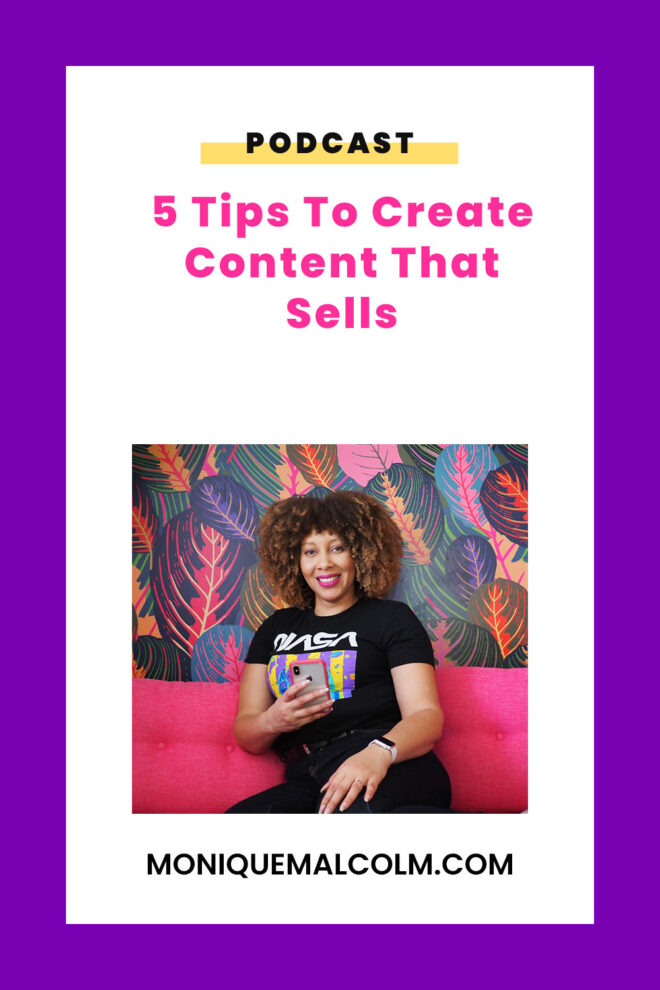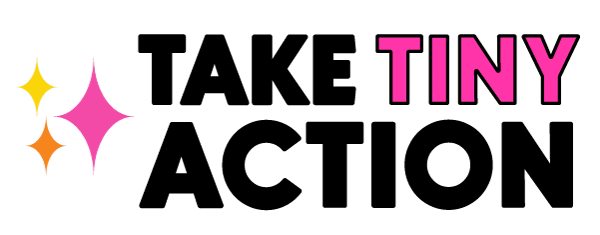
Likes and shares are cool, but sales are the real flex. Without sales, your business isn’t a business, it’s an expensive hobby.
So why do so many creative business owners focus on creating content that generates likes and shares versus sales?
Marketing involves a lot of content creation. Think about it. From podcasts to emails to TikTok, they all involve content creation. This is why your focus should be on creating content that helps presell your offers instead of pursuing vanity metrics. Likes and shares aren’t going to pay the bills.
In this episode, I’m sharing 5 tips that will help you create content that sells.
Tip #1: Know Your Audience And How You Will Help Them
If you want to sell more, you have to know who you are selling to. You need to understand your audience, their challenges, and how you can help them best.
This is something that we all know but few creative business owners really dive deep enough to understand. We tend to project a lot of our assumptions and wants on to our audience versus digging into what they really want.
Don’t skimp on the market research. Send a survey, comb through your website analytics, or get a few of your audience members on a call and ask them about their challenges in relation to your niche.
Once you know exactly who your audience is and what their challenges are, you need to structure your content around those issues because the main goal of your content is to presell your audience on your offer.
Here’s an example:
I have a client who’s a zero waste consultant. She helps small businesses reduce waste and implement more Earth friendly business practices.
One of the things we’ve been working on is building a content marketing system for her business. When strategizing content ideas, we won’t be focusing on things like “5 tools I use to run my business”. That doesn’t help presell her offer which is zero waste consulting.
Instead, we’ve been focusing on creating content around topics like “What is zero waste” or “Simple ways to implement zero waste practices into your business”. This helps demonstrate her expertise.
Tip #2: Tell A Story
Storytelling is an essential part of the human experience and a vital part of our daily communication.
Storytelling can be used to teach us lessons or helps us make decisions. It also makes processing complex information easier.
Using storytelling helps your audience to connect with you so they trust you and therefore they trust the brand. This works especially well when the story is relatable, which has the added benefit of being easier to understand and more memorable.
Stories that are personally relevant allow your audience to see themselves as the character in the story. This can create an emotional connection which is a powerful tool for selling.
So how do you tell a good story?
Years ago, I learned a really simple storytelling formula from reading Paul Jarvis’s now-defunct Sunday Dispatches newsletter. His storytelling formula is 3 parts: story, proof, lesson.
Story – Get your audience up to speed quickly by describing the situation or giving some backstory about what happened.
Proof – Establish credibility by sharing your evidence. You can do this with screenshots, pictures, or whatever else you have. This builds trust with your audience.
Lesson – Put a nice bow on the story by summarizing the lesson learned, key takeaway, or wisdom gained. Leave your audience with a specific call to action (more about this below).
I use this exact formula to write 100% of my emails and it has resulted in some of my best writing. This formula works well because it helps to turn your experiences into relatable story content for your audience.
If you want to learn more about storytelling, I encourage you to read the book Building A StoryBrand by Donald Miller (affiliate link).
Tip #3: Solve A Problem Or Cause A Mindset Shift
The main goal of your business is to solve a problem for your audience, so it makes sense that the content you create does the same thing. Solving problems through your content is a great tactic for helping your audience find you and showcasing your expertise.
It’s not talked about nearly enough but mindset shifts are as equally important as solving problems. Your audience isn’t going to spend money with you if they don’t believe your offer will work for them. So it’s your job to create content that helps them make that mental shift.
Webinars do this really well. Oftentimes, attendees show up thinking they are going to learn “How to start a 6-figure business” during a 60 minute presentation but it would be impossible to teach fully on that topic in such a short time frame.
Instead, most webinar content focuses on helping the audience make a mindset shift so that they see the results are possible for them to. Without that shift, your audience isn’t going to believe your offer is the right fit for them and they won’t take the next step.
To help your audience make those necessary mindset shifts, think about what your audience needs to believe before hiring you or buying your product. It’s the message that you need to make clear in your content.
Solving problems or causing mindset shifts help your audience continue along the customer journey.
Tip #4: Bake Social Proof Into Your Content
What is social proof?
Social proof is evidence that other people have purchased and found value in a product or service offered by a business.
Social proof is everywhere. When you’re browsing a sales page and see a testimonial, that’s social proof. When you’re scrolling through Instagram and you see your favorite brand share a video of an influencer using their product, that’s social proof.
Basically, social proof is borrowing third-party influence to sway potential customers. This is why influencer marketing has become so popular.
If your audience sees that someone else has had success with your product, they are more likely to believe it will work for them.
This is why you need to bake social proof into your content. This can be done in a variety of ways like sharing testimonials, case studies, product reviews, social shares, and user generated content.
Tip #5: Always Include A Call To Action
After your audience has finished consuming a piece of content, what should they do next?
If you want your content to help you sell, your need to end with a call to action. A call to action is a phrase used to tell your audience exactly what step to take next and how to take it.
Without a clear call to action, your audience may not know what you want them to do next. Don’t leave them hanging. Tell them what action you want them to take.
Calls to action are important because attention is scarce online. You need to tell your audience what to do next while you have their attention (and trust me you won’t for long).
Not all calls to action are sales related. Some CTAs are purely to increase engagement.
For example, you may want your audience to subscribe to your podcast, join your email list by downloading a content upgrade or share your latest Instagram post. You need to tell them what action you’re expecting them to take or they’ll leave without completing the task.
Including a call to action at the end of your content, helps move engaged members of your audience along the customer journey. If you’ve planned your funnels and used your content strategically, the next step might be a sale.
Pin This:

